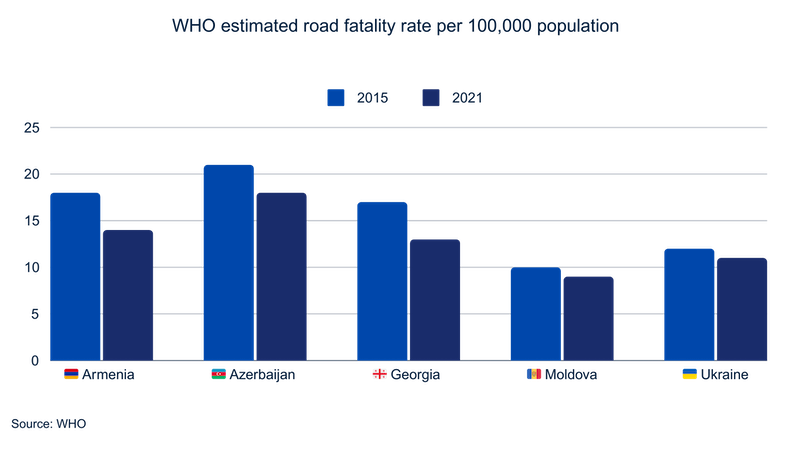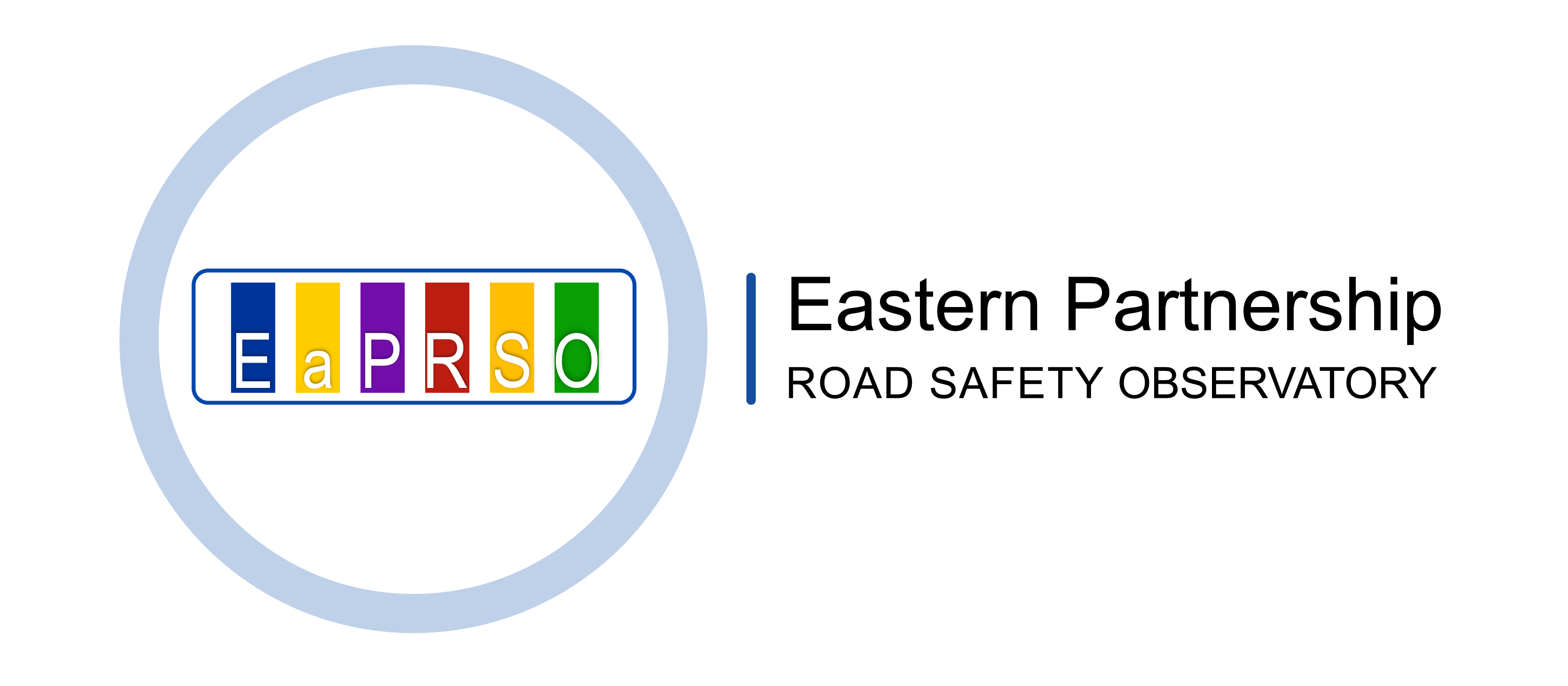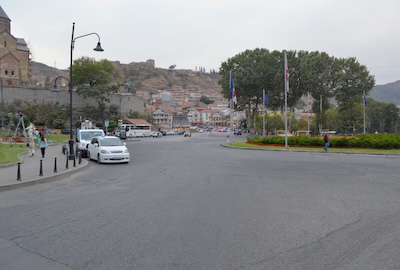Every year around 1.2 million people lose their lives on the world’s roads and between 20 and 50 million suffer life-changing injuries. Vulnerable road users (i.e. pedestrians, cyclists, motorcyclist, and users of micro-mobility devices such as e-scooters) account for over half of all road traffic deaths. Fatality rates in Eastern Partnership (EaP) countries are more than twice as high as in the European Union. Road death and injury is a major problem in all EaP countries requiring urgent attention.

Road death and injury is the biggest killer of young people aged 5-29 in every world region. According to the global NGO YOURS (Youth for Road Safety), more people aged between 15-29 die from road crashes than from HIV/AIDs, malaria, tuberculosis or homicide. In addition to the human tragedy, road casualties bear high social and economic costs. On average, the cost of road death and serious injury is around 4.5% of GDP across the five EaP countries.

Road safety is a complex, systemic issue. There are a number of key risk factors which increase the likelihood of death or injury as a result of a road traffic crash.
Speed is arguably the single biggest risk factor. The higher the speed the more severe the consequences. The WHO estimates that for every 1% increase in speed, there is a 4% increase in fatal crash risk. The safest maximum speed in areas where pedestrians and traffic mix is 30km/h.
Other significant risk factors include: non-use of seat-belts, child restraints, and helmets; distracted or impaired driving; unsafe vehicles and road infrastructure; inadequate post-crash care; inadequate legislation; and poor enforcement of traffic laws.
Accurate and detailed road crash data can help stakeholders accurately analyse risk factors and pinpoint priority issues for formulating road safety strategies and policies. Most countries have a mechanism for counting road traffic deaths and can provide some information on road traffic injuries. However, according to the World Bank Global Road Safety Facility all EaP partner countries “need to adapt their crash-related data collection to international standards and expand data collection to other road safety aspects, thus creating more robust regional and national road safety systems.”
Through the EaP RSO, we hope to improve the quality of systematic and consolidated data collection on road traffic deaths and serious road injuries in line with best EU and international practices to improve long-term data led management of the region’s roads and reduce fatal and serious road injuries across all five countries.
Roads which are safe for families, young people, and people with disabilities are safer for everyone. Too often a poor safety environment prevents children from attending school, women and people with disabilities from taking up economic opportunities, and elderly people from having a full and active life.
There is also a strong link between road safety, sustainable development, and climate change mitigation with co-benefits arising from the promotion of low-carbon mobility, reduced speeds, and sustainable land-use planning.
The work of the EaP RSO will address all of these issues and how they interconnect. We are working towards the goal of reducing road death and injury by 50% by 2030. At the same time, we will use data to advocate for road safety interventions that have an impact on wider issues related to equality, climate, and social justice.



